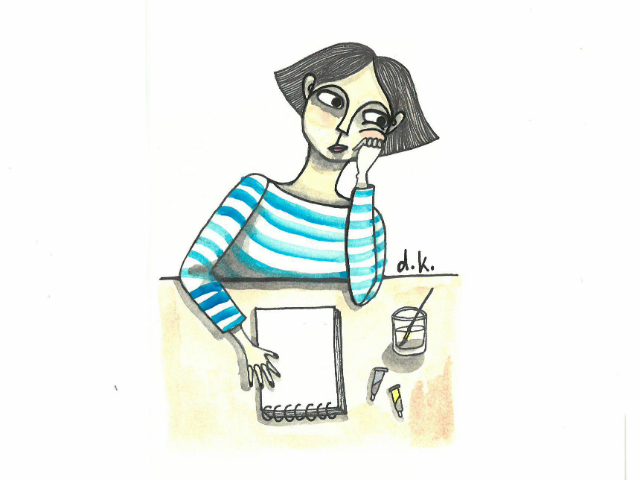
Imagine you’re a doctor during a shift in the A&E department. Your next patient is presented to you.
The patient has a pain in their chest that came on suddenly at dinner and hasn’t gone away since. This pain has also traveled to their right arm; they are covered in a cold sweat and have shortness of breath.
If this patient is a man, he will likely be diagnosed with a suspected heart attack. An electrocardiogram (ECG) will be performed to confirm this diagnosis. It is recommended an ECG is performed within 10 minutes of someone arriving at A&E with a suspected heart attack.
If the patient is a woman, she is 50% more likely to be misdiagnosed. Either sent home with a diagnosis of ‘anxiety’, ‘indigestion’, or another non-threatening diagnosis, she will not receive the ECG within the crucial 10 minute time frame.
This is just one of the many situations a woman might find herself in when presenting themselves to a healthcare professional. From heart attacks to reproductive health, the healthcare system seems to be closing doors on females.
Recent measures introduced by the government within the last few years have certainly made improvements—from 2020 to date, six specialist menopause clinics, five postnatal hubs, five regional hubs and a free contraception scheme for women and girls aged 17 to 31 have been established.
However, women still face stigma in healthcare. Care is not specific to the female body. So, what are we doing about it? Are we doing enough for women’s healthcare?
To understand women’s healthcare in Ireland, it’s essential to consider the historical context.
For decades, Ireland’s approach to women’s health was shaped by conservative views, with limited reproductive options and heavy stigmatization around issues like contraception and abortion. Key legislative milestones have marked significant changes, such as the repeal of the Eighth Amendment that ended Ireland’s constitutional ban on abortion and, following this, the Health (Regulation of Termination of Pregnancy) Act, giving women new but regulated access to abortion services.
Women’s healthcare has improved in Ireland, yet significant gaps remain.
Maternal healthcare, for instance, has seen positive strides, but maternal mortality rates—though relatively low—still reveal disparities in quality of care, especially among marginalized groups. Reproductive health services have expanded since the legalization of abortion, yet access to abortion facilities remains inconsistent.
Comprehensive contraceptive access has also been enhanced by government programs like the free contraception scheme, yet barriers persist.
Gynecological care similarly faces challenges; waiting lists for essential procedures, such as endometriosis treatment, are lengthy, leaving many women to endure chronic pain with little recourse – if they’re lucky enough to be diagnosed at all. Sexual health education is another crucial but unevenly implemented service.
For women in rural or marginalized communities, these lack significantly.
Rural clinics may lack specialized services, forcing women to travel significant distances for primary care. Additionally, women from minority ethnic backgrounds and those with lower socioeconomic status encounter added barriers—language, financial, and cultural—which can deter them from seeking necessary healthcare.
An area needing attention in women’s healthcare is the glaring gap in research and clinical trials involving female subjects. Historically, clinical studies have predominantly used male participants, a bias that extends even to animal testing. As a result, many medications and treatments lack adequate testing in women, leading to less effective or even harmful outcomes.
This research gap has significant implications for women’s health, as the safety and efficacy of certain drugs may vary across sexes, and side effects or optimal dosages for women are often unknown or miscalculated.
To address the research gaps, chronic health conditions that heavily impact women—such as endometriosis and autoimmune diseases—require a more tailored healthcare approach.
Endometriosis, affecting around one in ten women, often goes undiagnosed for years, bringing prolonged physical and mental challenges. The shortage of research specific to women’s health only deepens these issues, leaving many conditions under-researched and misunderstood. Despite Government funding, noticeable improvements remain scarce—many women still face obstacles in receiving a diagnosis for these conditions. Procedures to assess such conditions are categorized as ‘non-urgent,’ resulting in long waiting lists.
Strengthening healthcare for women in Ireland is crucial to achieving a more inclusive and responsive system.
While there has been progress closing gaps is a matter of healthcare equality and societal responsibility, influencing families, communities, and the economy as a whole.
Looking ahead, it’s essential to consider how all women can gain access to comprehensive healthcare. This goal can be reached through dedicated research efforts, addressing healthcare inequities, and regularly updating policies to reflect women’s changing healthcare needs.
By committing to women’s health, Ireland can build a stronger, healthier future for future generations. Are we willing to make that change?



